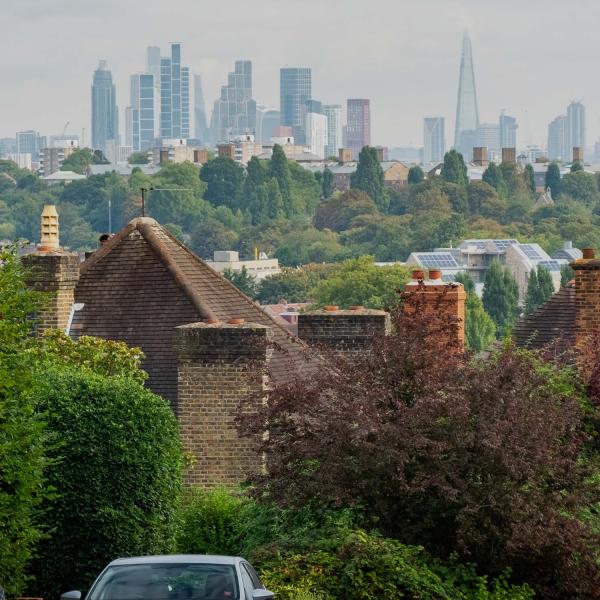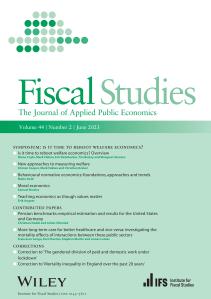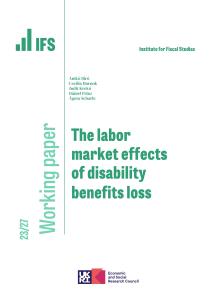Summary
Today Amber Rudd, the Secretary of State for Work and Pensions, announced that the ‘two-child limit’ in tax credits and Universal Credit will not apply to children born before the policy was implemented in April 2017. This tackles the ‘retrospective’ application of the policy that had attracted criticism, and it means that the full impact of the policy will not be felt until the mid-2030s. But that long-run impact remains unchanged: ultimately the two-child limit will, among those families affected by it, reduce their incomes by an average of £3,000 per year. This remains a major reform to our benefits system.
Today Amber Rudd, the Secretary of State for Work and Pensions, announced that the ‘two-child limit’ in tax credits and Universal Credit will not apply to children born before April 2017, though it will continue to apply to those born after. This observation summarises the key facts about the two-child limit, today’s change to the way it is planned to be rolled out, and their effects.
The two-child limit, first announced at Summer Budget 2015, means that the child element of tax credits and Universal Credit is limited to the first two children in a family (with a small number of exceptions), and so families do not see any increase in entitlement for third and subsequent children. Prior to the two-child limit, a family could receive the child element of child tax credit – currently worth £2,780 per year – for each child, subject to a means test. This is in addition to child benefit, which is currently worth £1,079 per year for the first child and £714 for each subsequent one and which, subject to its own rather different form of means test, continues to be available for all children. In combination this means that, in the absence of the two-child limit, an out-of-work family with three children would be entitled to £10,840 per year from these benefits; one with four children would be entitled to £14,330. Many of these families are also entitled to other benefits, such as housing benefit and Jobseeker’s Allowance. By capping the number of child elements that a family can receive at two, the two-child limit reduces benefit entitlements for the typical affected family by £2,780 for every child they have beyond the second.
The first part of the policy came into effect from April 2017 and applied only to children born after that date. The original plan was, starting next month, to apply the two-child limit to any new claimant of means tested benefits, regardless of when their children were born. Under today’s policy change, the two-child limit will continue to apply only to children born after April 2017. This addresses the issue of ‘retrospection’ that some had objected to – it will no longer be the case that those who had decided to have three or more children before the policy was announced will be affected (apart from in respect to any children they have had since).
Today’s announcement makes no difference to the long-run generosity of the benefit system. Eventually all children will be born after April 2017, and so the two-child limit will apply to all families with more than two children. What this reform does do is to slow down substantially the speed of the rollout of the policy – its long-run impact will now not be fully felt until the mid-2030s.
That long-run impact is the issue we turn to now. Its actual size will be dependent upon a number of factors, including how many large families there are in the mid-2030s and beyond, what their incomes are, what future reforms are made to the benefit system and so on. If the population then looks similar to now, and there are no further benefit reforms, around 700,000 families would be entitled to less support than they would have been in the absence of the two-child limit. Of those, around one-third would be lone parent families and around 70% would have at least one adult in paid work. Those affected by the two-child limit would be getting an average of £3,000 per year less than they would have got otherwise – equivalent to 10% of their income on average, and representing a saving to the Exchequer of about £2 billion per year in today’s terms.
We previously estimated that the policy would increase child poverty (on the government’s official measures, and after deducting housing costs) by roughly 300,000, depending on precisely which measure of poverty is used. This is a sizable effect for a policy saving £2 billion, and there are three reasons why it is so big. First, it has a large impact on the incomes of those affected. Second, after adjusting as poverty measures do for the fact that these families have many people to support, the affected families (and bigger families more generally) are relatively likely to be close to the poverty line. 90% of those affected are among the poorest half of families with children (measuring their incomes after adjusting for household size and composition), and 45% are in the poorest quarter. Third, the policy by definition only affects families with three or more children, so the impact on the number of children in poverty is large relative to the number of families affected.
Amber Rudd’s reform announced today certainly addresses the issue of ‘retrospection’ that had attracted criticism. But it does nothing to change the fact that, in the long-run, the two-child limit substantially reduces the extent to which the benefits system supports poorer families with three or more children.








